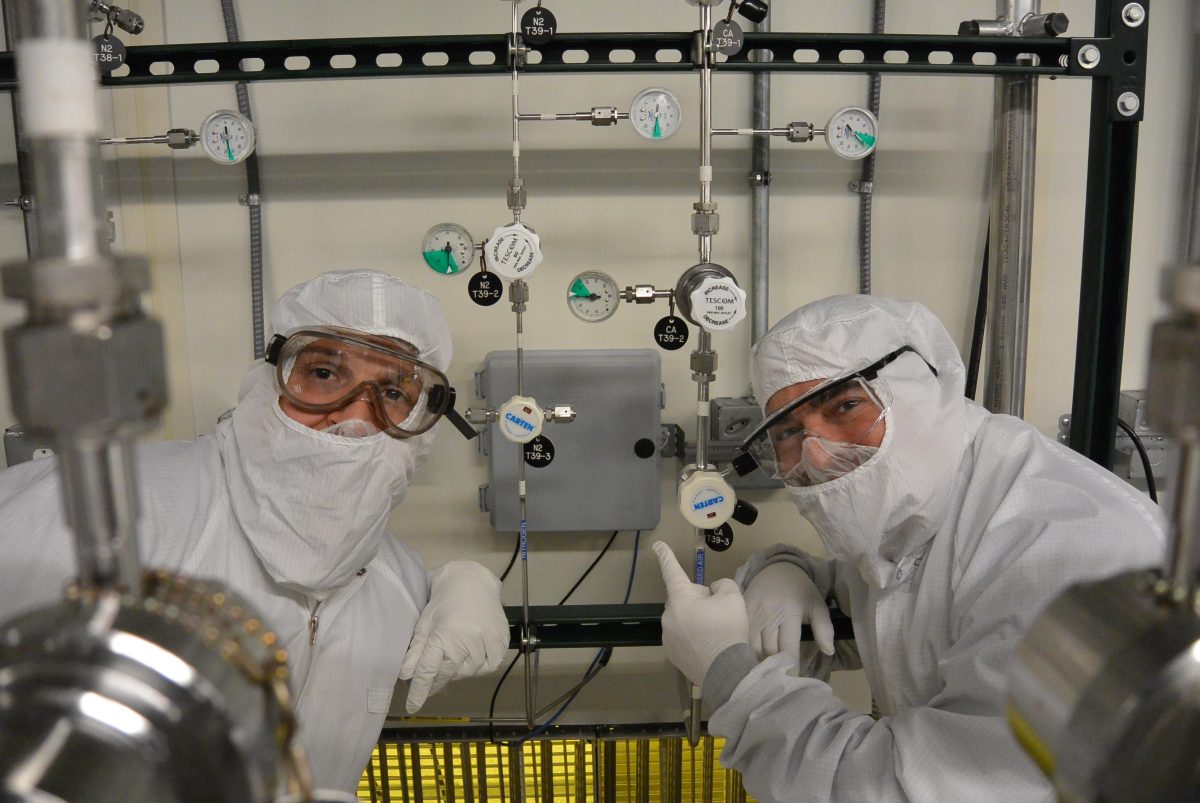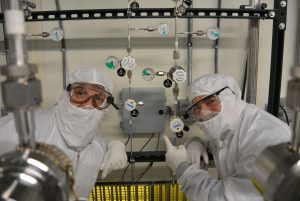Monthly, the OSU Nanotech West Lab (managed by IMR) struggles with accounting and paperwork associated with the numerous tools and instruments for which it charges user fees. All of these tools have historically had paper log sheets. Other OSU systems that are available to Nanotech West (NTW) have not fit its needs. A very limited few commercial systems exist but were found to be exceptionally expensive.
Nanotech West Lab staff members Stacy Coil and Derek Ditmer had an idea. They came up with an inexpensive way to switch on/off an instrument with a key-fob-based interlock – the same key fob that users use to access the front doors of the lab.
They took a commercially-available single-board computer (a Raspberry Pi, ~$30), which runs a stripped-down version of the operating system Linux. They added an SD memory card as a hard drive, a USB key fob reader, and a USB-based switchable terminal block. They wrote code that, during key swaps, a) checks if a user is trained on the particular tool; b) records the time “in”; and c) records their time “out” during a final key swipe. It stores those times (and the resulting accounting records) in the primary NTW database over the local internet. Other software can then turn those records into an accounting record. As of this writing, the interlock box parts currently cost a total of $150 per point, but Derek and Stacy believe that they can lower the price significantly. A box will interlock a tool by turning on and off some significant feature such as a computer monitor, a keyboard, a vacuum switch, or something else.
The interlock is “debuting” on COT03, a spin-coater in the photolithography area, in mid-March 2015 (technically, it debuted in Derek’s office cubicle in February, by turning a flashlight on-and-off). Other IMR-affiliated laboratories have already asked for a copy.


